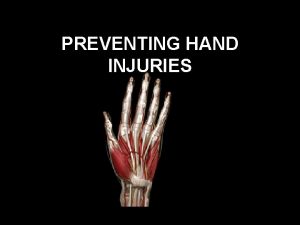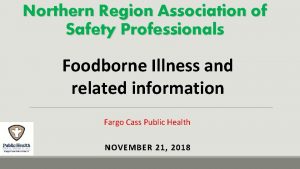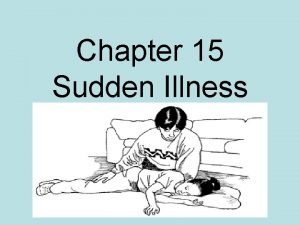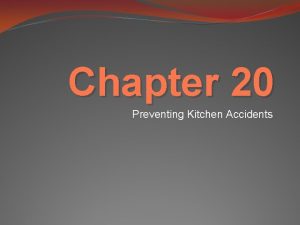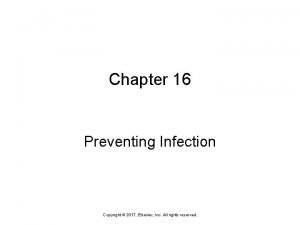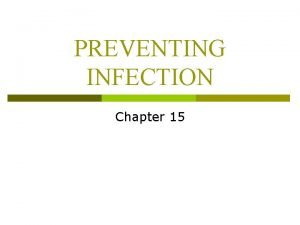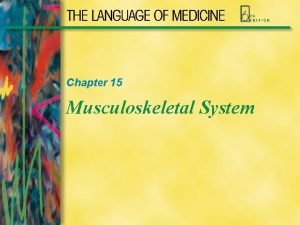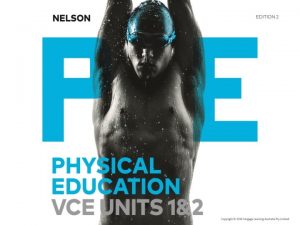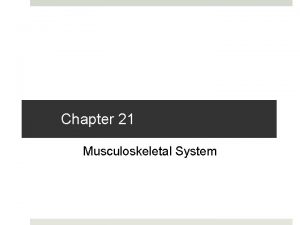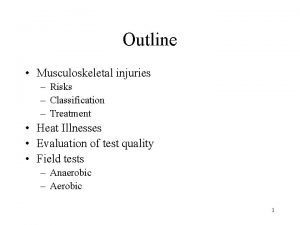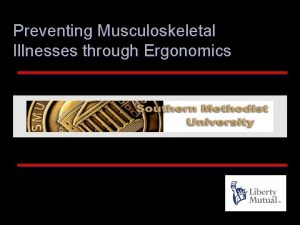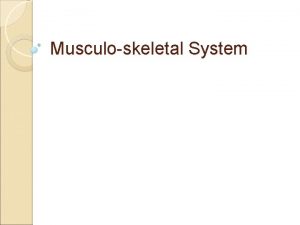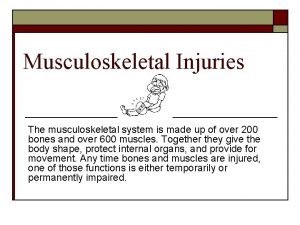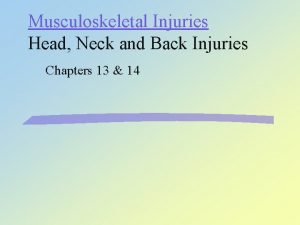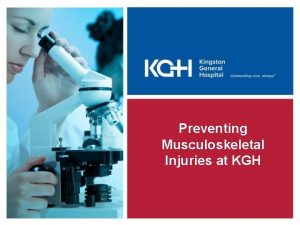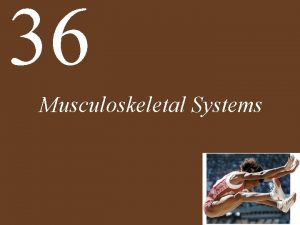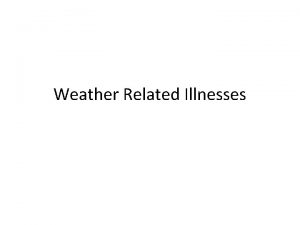CHAPTER 3 PREVENTING MUSCULOSKELETAL INJURIES AND ILLNESSES KEY














- Slides: 14


CHAPTER 3 PREVENTING MUSCULOSKELETAL INJURIES AND ILLNESSES

KEY KNOWLEDGE v Causes of potential acute and chronic injuries and illness associated with the muscular and skeletal systems, such as arthritis, osteoporosis and other musculoskeletal conditions v Physiological strategies to prevent musculoskeletal injuries, such as physical preparation of athletes, warm-ups and cooldowns v The role of physical aids that support the musculoskeletal system, such as protective equipment, taping and braces © Victorian Curriculum & Assessment Authority


COSTS OF INJURY We should all minimise the risk of injury (particularly serious injury) from sport and physical activity. According to a Victorian government sports injury prevention taskforce, ‘Sports-related injury is a major component of accidental injury in Victoria’. Minimising the risk of injury will benefit both individuals and our health costs. The costs of sports-related injuries include: v healthcare for treatment v Insurance costs v time and productivity lost v time lost to future sporting activities v long-term physical, psychological or emotional damage v equipment and program costs for rehabilitation and prevention

CAUSES OF ACUTE INJURIES Acute injuries occur usually without warning – e. g. a hamstring strain. Acute injuries are either direct or indirect. Direct injuries are the result of an external force such as a collision with another person or a direct blow. They may cause minor damage (a bruise) or major damage (a broken bone) Indirect injuries are usually caused by a sudden change in direction or intensity (a strained ligament) Immediate first aid can help to reduce recovery time.

CAUSES OF CHRONIC INJURIES Overuse injuries come from the continual performance of some type of movement (‘shin splints’ from running, elbow tendonitis from tennis). Factors that can lead to chronic injuries include: v the repetitive nature of the activity v insufficient recovery time between training sessions v inappropriate increase in training load v inadequate footwear v inappropriate training surface. If early warning signs (usually pain) of an overuse injury are ignored, more serious injuries, such as stress fractures, may result.

PHYSIOLOGICAL STRATEGIES TO PREVENT MUSCULOSKELETAL INJURIES (1) 1 Pre-activity screening 2 Warm-up 3 Physical preparation 4 Cool-down 1 Pre-activity screening (e. g. the Par-Q questionnaire) should identify any existing conditions that may increase the risk of injury.

PHYSIOLOGICAL STRATEGIES TO PREVENT MUSCULOSKELETAL INJURIES (2) 2 The warm-up prepares the performer both physiologically and psychologically for the main work to follow. A suitable warm-up usually lasts about 8 to 10 minutes, and causes a slight sweat. 3 Preparation: Correct training methods must be targeted to match the goals of the performer: e. g. if strength is a goal, then resistance training should be considered. Periodisation in the training program will minimise the risk of injury through overtraining. 4 The cool-down should enable the body to return to a pre-exercise state. Generally the performer will continue the same activity at a lower intensity, followed by some stretching

PHYSICAL AIDS TO SUPPORT THE MUSCULOSKELETAL SYSTEM Sport-specific protective equipment has been designed to help reduce, or prevent, musculoskeletal injuries. Taping and bracing provide joint stability during physical activity. See more detail on protective equipment and on taping and bracing on pages 6366 of the textbook.

COMMON MUSCULOSKELETAL CONDITIONS (1) Musculoskeletal conditions are disorders of the bones, muscles and their attachments. They are the most common chronic conditions in Australia. 28% of Australians (more than 6 million) have arthritis and other musculoskeletal conditions, according to Australia’s national agency for health and welfare statistics and information.

COMMON MUSCULOSKELETAL CONDITIONS (2) Arthritis involves inflammation in one or more joints. The most common type is osteoarthritis: healthy cartilage that covers the ends of bones, making it easier for them to slide over each other, starts to break down and wear away. When this happens, bones rub together, causing swelling, reduced movement, and pain.

COMMON MUSCULOSKELETAL CONDITIONS (3) Rheumatoid arthritis causes inflamed joints, particularly the hands. It is classified as an autoimmune disease (the body’s own immune system starts to attack healthy tissue). In rheumatoid arthritis the immune system attacks the synovial membrane (the lining of our joints), causing inflammation, pain and joint damage.

COMMON MUSCULOSKELETAL CONDITIONS (4) Osteoporosis occurs when bones lose minerals such as calcium faster than they can be absorbed. As a result, the bones become less dense, lose strength, and are more likely to break. Osteoporosis has no visible warning signs. You can help to prevent osteoporosis by: v eating calcium-rich foods v doing regular weightbearing exercise, v ensuring sufficient vitamin D absorption.
 Chapter 14 promotion of safety
Chapter 14 promotion of safety Chapter 13:2 preventing accidents and injuries
Chapter 13:2 preventing accidents and injuries Chapter 4 preventing injuries through fitness
Chapter 4 preventing injuries through fitness Preventing hand injuries
Preventing hand injuries Big 6 illnesses
Big 6 illnesses Signals of sudden illness
Signals of sudden illness Chapter 24 lesson 2 preventing and treating stds
Chapter 24 lesson 2 preventing and treating stds Chapter 9 resolving conflicts and preventing violence
Chapter 9 resolving conflicts and preventing violence Chapter 9 resolving conflicts and preventing violence
Chapter 9 resolving conflicts and preventing violence Chapter 6 musculoskeletal system diseases and disorders
Chapter 6 musculoskeletal system diseases and disorders Chapter 20 preventing kitchen accidents
Chapter 20 preventing kitchen accidents Chapter 16 preventing infection
Chapter 16 preventing infection Chapter 15 preventing infection
Chapter 15 preventing infection Chapter 21 the musculoskeletal system
Chapter 21 the musculoskeletal system Knuckle like process at the end of a bone
Knuckle like process at the end of a bone



